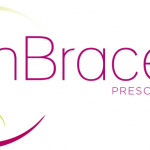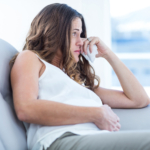Every Wednesday, we have the pleasure of holding virtual rounds with other clinicians to discuss important topics in reproductive psychiatry. So many great questions! Last week, one of our participants asked about using light therapy for the treatment of depression during pregnancy. This is a topic we haven’t covered for nearly a decade, so it seemed like a good time to revisit the topic.
Despite data to support the reproductive safety of many antidepressants during pregnancy, many women would prefer to avoid medications, if possible. In this setting, many women pursue psychotherapy, others use acupuncture or yoga or exercise. Although non-pharmacologic treatments are perceived as being safer than medications, this is only true if the treatment is effective. Exposure to untreated psychiatric illness in the mother carries is not without risk and has been associated with worse outcomes.
Bright light therapy may be an attractive treatment for perinatal depression because it is inexpensive, can be performed at home, and carries a low risk of side effects. Most importantly, there is evidence to indicate the efficacy of bright light for both seasonal and non-seasonal types of depression.
Light Therapy for Depression During Pregnancy
In an open trial including 16 pregnant women with a major depressive episode, Oren and colleagues (2002, reviewed HERE) showed a significant decrease (by 49%) from baseline in Hamilton Depression Rating Scale (HDRS), Seasonal Affective Disorders Version (SIGH-SAD) scores after 3 weeks of 10,000 lux bright light therapy. Light was administered for 60 minutes per day, beginning within 10 minutes of awakening. In a subset of participants (n?=?7) who continued treatment for 5 weeks, scores on the SIGH-SAD decreased even further, falling 59% from baseline.
Epperson and colleagues (2004) conducted a randomized controlled trial in which participants with antepartum depression received either 7,000 lux (active, n?=?5) or 500 lux (placebo, n?=?5) of light for 5 weeks. The treatments were administered for 60 minutes per day, beginning within 10 minutes of awakening. There were no differences between the treatment and placebo groups at 5 weeks. SIGH-SAD scores were reduced similarly by bright light and by dimmer light; however, when the treatment was extended to ten weeks, they did observe a greater reduction in depressive symptoms in women receiving active treatment versus placebo.
In another randomized, placebo-controlled trial (reviewed HERE), Wirz-Justice and colleagues assigned women with antenatal depression to receive either 7,000 lux white light (n=24) or placebo (n=22, 70 lux red or dim light) which were administered for 60 minutes daily for 5 weeks. Participants receiving the bright light treatment showed significantly greater improvement in HDRS with Atypical Depression Supplement (SIGH-ADS) scores than those in the placebo treatment, and categorical analysis revealed that the response rate (HDRS???50% improvement) at week 5 was significantly greater for bright light (81.3%) than for placebo (45.5%). Remission (HDRS < 8 ) was attained by 68.6% in the light group versus 36.4% in the placebo group (p < .05).
Is Bright Light Therapy a Viable Option?
No studies have assessed the risk of light therapy to the fetus; however, because one hour of light therapy provides the same amount of light exposure to one hour of outdoor daylight, this treatment should not pose any risk to the fetus.
In terms of side effects, light therapy is generally well-tolerated. Side effects include eyestrain, headache, and nausea. For patients with bipolar disorder, light therapy may trigger hypomania or mania.
One of the real challenges with bright light therapy is adherence. The studies outlined above required one hour of light exposure per day for 5-10 weeks. Its effectiveness depends on three factors: light intensity, duration of the session, and timing.
- Intensity: The typical recommendation is to use a 10,000-lux light box at a distance of about 16 to 24 inches from the face.
- Duration. With a 10,000-lux light box, light therapy typically involves daily sessions of about 20 to 30 minutes. However, the studies for perinatal depression above used one hour sessions of 7,000 or 10,000 lux.
- Timing. Light therapy is most effective when performed early in the morning, shortly after waking.
While light therapy may not be a replacement for antidepressant medications for all pregnant and postpartum women with depression, light therapy could play an important role in the treatment of certain subgroups of women. Because patients with more severe depression (i.e., those with suicidal ideation and/or psychotic symptoms) were excluded from these studies, it is unclear if light therapy would be effective in this population. Similarly it is not known if light therapy would be as effective for women with comorbid anxiety disorders.
Ruta Nonacs, MD PhD
Epperson CN, Terman M, Terman JS, Hanusa BH, Oren DA, Peindl KS, Wisner KL. Randomized clinical trial of bright light therapy for antepartum depression: preliminary findings. J Clin Psychiatry. 2004 Mar;65(3):421-5.
Oren DA, Wisner KL, Spinelli M, Epperson CN, Peindl KS, Terman JS, Terman M: An open trial of morning light therapy for treatment of antepartum depression. Am J Psychiatry. 2002, 159: 666-669.
Smith CA, Shewamene Z, Galbally M, Schmied V, Dahlen H. The effect of complementary medicines and therapies on maternal anxiety and depression in pregnancy: A systematic review and meta-analysis. J Affect Disord. 2019 Feb 15; 245:428-439.
Wirz-Justice A, Bader A, Frisch U, et al. A Randomized, Double-Blind, Placebo-Controlled Study of Light Therapy for Antepartum Depression. J Clin Psychiatry 2011; 72(7):986-993.








Leave A Comment